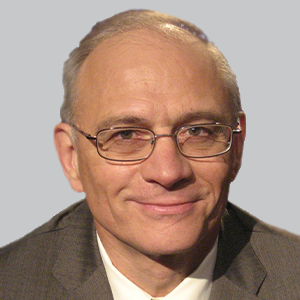Article
Diagnosing Rare, Unidentified Diseases at the Undiagnosed Diseases Program
Author(s):
The Clinical Director of the NHGRI spoke about the impact of the NIH program and its future development.

William Gahl, MD, PhD
At the National Institutes of Health (NIH) there exists a program for patients who, despite medical help, cannot get a diagnosis for their respective ailment. This program, called the Undiagnosed Diseases Program, was launched in 2008 by the group effort of the National Human Genome Research Institute (NHGRI), the NIH Clinical Center and the NIH Office of Rare Diseases Research, in order to aid individuals whose conditions have eluded medical diagnoses.
The program is part of the Undiagnosed Disease Network, a group of clinical sites nationwide which help to hasten discovery and innovation in diagnosis and treatment methods for those with previously undiagnosed diseases.
Led by William Gahl, MD, PhD, the Clinical Director of the NHGRI, the program utilizes everything from laboratory tests, to biopsies to next-generation sequencing to attempt to diagnose these patients. According to NIH data, of the 750 accepted applications to the program from May 2008 to May 2014, between 25% and 50% of cases have been resolved with either a clinical, molecular or biochemical diagnosis.1
To understand more about what the program’s impact has been and its future, NeurologyLive spoke with Gahl at the Child Neurology Society’s 2018 annual meeting in Chicago, Illinois.
NeurologyLive: Do you have any plans for the program to expand?
William Gahl, MD, PhD: The program was just at the NIH from 2008 to 2013, and then it expanded with NIH money to 6 extramural sites along with some ancillary programs for model organisms, examination, sequencing, a repository, and a coordinating center—things of that sort. There were 6 sites between 2014 to 2018, and now from 2018 to 2022, there are going to be 11 extramural sites and studies medical centers all around the country.
Has it impacted clinicians and their diagnostic process?
These are special cases. That is, to say, they have to be referred after a lot of the known diagnoses or known diseases have been eliminated. It really is the responsibility of the medical centers that have patients who could be eligible to refer them. So, it’s really only a small portion of the entire clinical enterprise that engages in an undiagnosed diseases program or network.
But for those individuals, there have been well over 200 diagnoses made by the network just in the last couple of years, and these cases are special cases because some of them are new diseases. They’ve been published in the New England Journal of Medicine and in the American Journal of Human Genetics and it’s caused the creation of advocacy groups for some of these diseases. And not only that but, on an individual basis, the patients and the families are incredibly appreciative to have some cause for their disease. It helps for them to essentially justify the fact that they have a disease. It’s very difficult for people to say they have a disease, but they don’t know what it is. They’re met with a lot of suspicion from their colleagues. It helps with prognosis to determine what’s going to happen and to counsel other family members about the possibility that it could affect them as well.
Anything you’d like to add?
The people who don’t have a diagnosis are desperate for a diagnosis and they’re desperate to have colleagues and other individuals, to know others and be part of a community that has a goal to bring forth research, and sometimes even treatment, for those new disorders. And when the medical profession doesn’t know anything about a disorder, it makes that disorder and that patient and that family, essentially abandoned. Now our federal government, because of the taxes all of us pay, is offering that as one of the benefits of the new medical material that we have.
Transcript edited for clarity.
REFERENCE
1. Undiagnosed Diseases Program. National Human Genome Research Institute website. Updated September 2, 2015. genome.gov/27543155/udp-background. Accessed January 3, 2019.
























